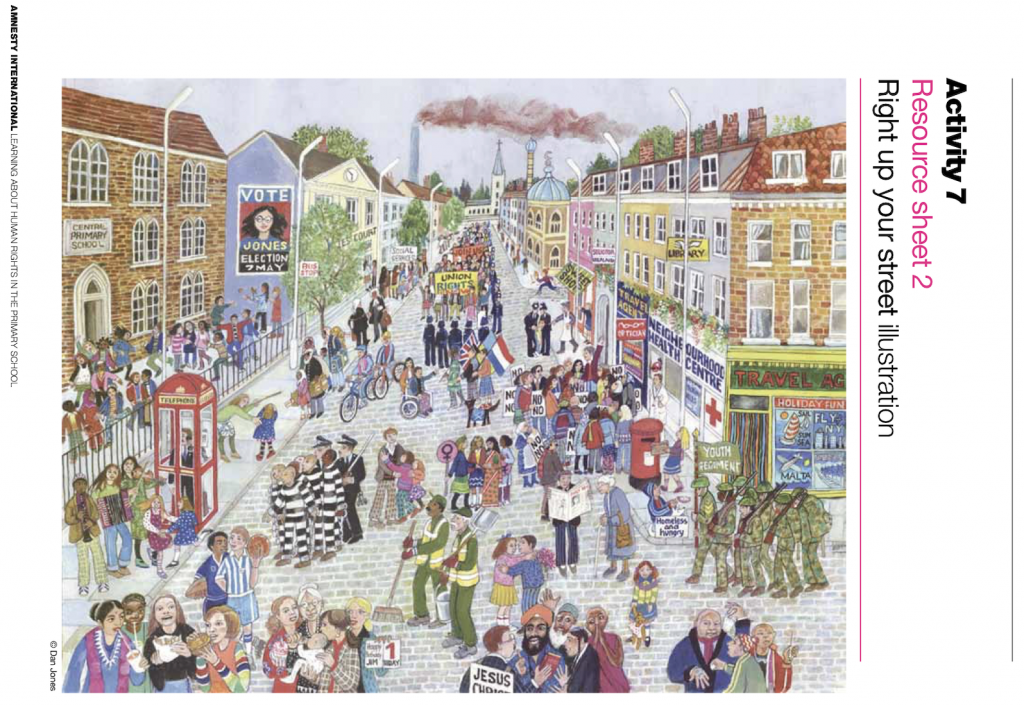Human Rights Day Information & Resources for Kids
December 10 is Human Rights Day. It commemorates the signing of the Universal Declaration of Human Rights (UDHR), adopted by the United Nations in 1948.
Thirty declarations were written to protect the rights of all people, everywhere.

Disclosure: This post contains affiliate links. By clicking through and making a purchase, we receive a small commission at no extra charge to you. All proceeds help support our free global education website. Thank you!
What Are Human Rights? Human Rights Defined
Watch this documentary that introduces the story of human rights. *Preview first to determine suitability for your audience.
The Universal Declaration of Human Rights (UDHR)
Check out this version of the Declaration, which was simplified for kids from Amnesty International. It includes an activity, Right Up Your Street, in which students analyze a typical neighborhood scene to find examples of human rights being enjoyed, denied, and demanded. Find out how to use the activity here.

We Are All Born Free
In this book, published in association with Amnesty International, the 30 articles of the Declaration are simplified for elementary school students.
Each one is beautifully illustrated by an internationally renowned artist (featured in the back of the book). Fifteen of the illustrated pages of the book can be found in The Guardian.
Before reading, ask students to share what they already know about human rights. What rights does every human being have? Record responses on chart paper. Ask students to describe what their responsibilities are when it comes to respecting the rights of others. Explain that after World War II, world leaders formed the United Nations to help build peace. One of the first things it did was write a list of rights that would belong to everyone in the world. They came up with 30, including our right to say what we believe and our right to be protected by the law. Explain that this book is an example of those rights.
During reading, discuss the human right shown and their meaning. Take time to share the details of each illustration. Decide how the picture links to the human right: does it show that everyone’s rights are respected or does it show people not being protected by their rights. *Note: The illustration for Article 5, “Nobody has any right to hurt us or to torture us” is of a red-stained doll. You could simply skip this article, or discuss it in terms you feel are appropriate.
After reading, revisit the student list of human rights from before reading. Put a star next to any that are similar to one of the 30 rights. Ask students if they think that human rights are important to help us all live together. Students can create and share ways to bring awareness to others (posters, skits, illustrated books donated to the school library, etc.).

Human Rights Here and Now Celebrating the Universal Declaration of Human Rights
This great resource includes basic background information, activities, tips for taking action, and support materials.
Human Rights Book Collection
13 books that explore the issues of human rights around the world and in the United States, and the great leaders who have fought to protect those rights (Lee & Low Books). Each title includes a Teacher’s Guide and/or Interviews.


